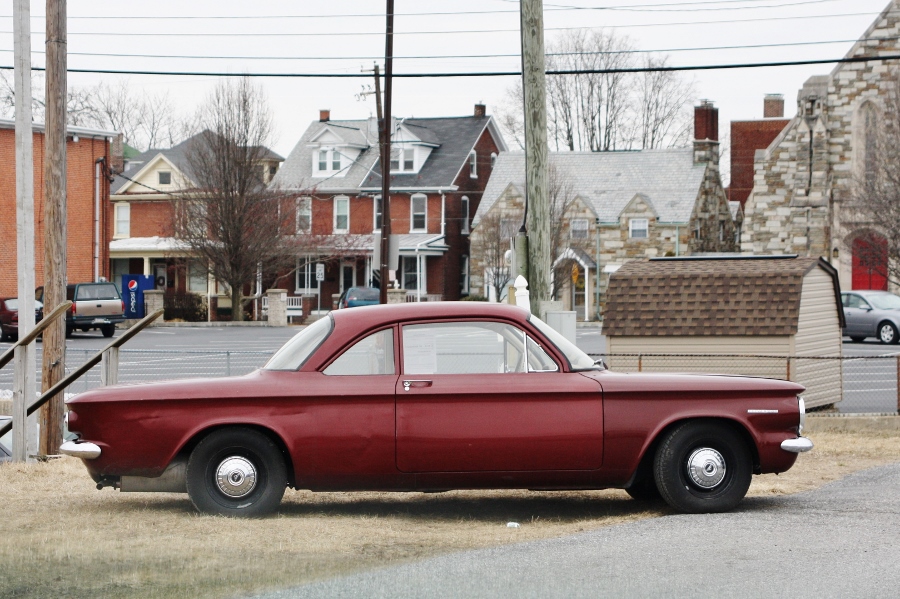It was a typical late winter day in Pennsylvania – chilly, flat grey overcast, ice breaking up on the Susquehanna, and Tiny Dancer playing on the car radio.
Everything around me conspired to put this driver into a wistful, reflective mood (the kind where you think about life choices). Thankfully, this funk was soon shaken off by the appearance of a controversial automotive classic – the loved, hated and sometimes feared Chevrolet Corvair.
The late-first generation Monza coupe I stumbled across – the Corvair’s most popular body style by far – was a pretty plain-Jane affair, with blackwall tires and pie-plate hubcaps complementing its spartan exterior. Likely, this model came equipped with the base 2.4-litre flat-six engine, making 80 or 95 horsepower depending on whether it was a ’63 or ’64 model.
The upgrade engine was a 2.7-litre, 110-horsepower flat-six, though signing off on a Spyder model would net you a 150-horsepower, turbocharged version of that same engine. In keeping with the car’s reputation as a rear-engined automotive oddity, the Corvair’s powerplants were air-cooled and had aluminum engine blocks.
Touted as a ‘poor man’s Porsche’, the Corvair sold in large numbers following its 1960 launch and was available in a wide variety of body configurations – even a pickup and van was offered – but the car’s sporty, go-anywhere lustre was replaced by a sales-killing stigma in 1965.
That year, lawyer and consumer activist (and later failed presidential candidate) Ralph Nader published Unsafe At Any Speed, a hard-hitting look at the American automotive industry that revealed an aversion to fixing known safety issues. The Corvair, and the rear swing-axle suspension it used between 1960 to 1963 – was featured heavily in the book.
Nader referred to the vehicle as a “one-car accident”, stating the suspension design, along with the omission of front anti-roll bars, made the car vulnerable to fatal rollovers. Though his assertion was sometimes disputed – even by scientific studies – the damage was done, and the Corvair’s reputation as a rolling death trap was created.
Despite being redesigned in 1965 (and not containing the controversial suspension components), sales of the Corvair tanked following the release of the book. After a 50% sales drop for the 1966 model, and a 75% drop the year after, the Corvair withered on the vine until it was dropped from the Chevy lineup during the 1969 model year.
Going from industry darling to social pariah, the Corvair’s fall from grace served as a harbinger for the automotive scandals that cropped up in the 1970s – mainly, the fire-prone Ford Pinto and crappy-all-over Chevy Vega.
While those two vehicles are classic lessons on the dangers of cost-cutting, the Corvair exists as a cautionary tale – an example of the rewards and challenges facing any automaker intent on doing ‘something completely different.’

